Regional reports on Michigan vegetables – June 15, 2011
MSU Extension educators’ pest and vegetable updates for Michigan.
This week’s regional reports:
- Southwest Michigan – Ron Goldy
- East Michigan – Hannah Stevens
- Grand Rapids Area – Bill Steenwyk
- Central Michigan – Fred Springborn
- West Central Michigan – Norm Myers
Southwest Michigan – Ron Goldy, Michigan State University Extension
|
Weather
Temperatures averaged above normal with highs ranging from 60 to 94oF and lows ranging from 50 to 73oF. There was 0.75 to 1 inch of precipitation across the area. Most sites have adequate moisture at this time.
Field activity
Planting of peppers and tomatoes continues, but will be mostly finished this week. Rain on June 9-10 was not enough to significantly affect field activity.
Crop reports
Asparagus harvest is complete on most fields and weed control applications are being made.
Peas have 1.5 inch pods and harvest will probably start next week.
Potatoes continue to grow well and all stages of Colorado potato beetles can be found.
Tomatoes grown in tunnels continue to size fruit. Non-tunneled tomatoes are at bloom. Stakes continue to be placed in fields and plants are being pruned and tied. Pepper and tomato transplanting will be mostly finished this week.
Sweet corn in tunnels is silking and early-planted, non-tunneled plantings are 24 inches tall.
Zucchini and yellow squash transplants in tunnels are being harvested. Early, direct seeded fields are close to bloom.
Pumpkin and fall squash are at second or third true leaf.
Tunneled cucumber and cantaloupe are in bloom and harvest will probably begin next week on tunnel-grown cucumbers.
Armyworms have been reported as a serious problem in some corn fields. Read MSU’s Chris DiFonzo’s article, Scout now for armyworm and cutworm in southern and central Michigan for more information. Other than armyworms, no serious pest problems have been reported.
East Michigan – Hannah Stevens, Michigan State University Extension
|
Field conditions
Scattered rainfall with some high winds brought half an inch or more to some areas while some received only 0.1 inches. Maximum temperatures ranged from the low 60s to mid-90s. Most soil types are now dry enough to work while some are overly dry and under drip irrigation, if available. Alfalfa cutting and baling is active, which may result in leafhopper movement into adjacent crops.
Crop conditions
European corn borer numbers being monitored in sweet corn averaged seven moths per trap, similar to last week. Established tomatoes benefitted from row covers this year and some are beginning to set fruit. Tunneled eggplants are in first flower as well. Bunched radishes are in the second week on the wholesale market as are herbs such as parsley, cilantro and others.
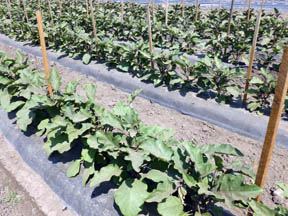
Eggplant in flower.
Some pumpkin, winter squash and gourd acres are emerging while some fields have yet to be seeded. Summer squash intended for retail is close to flowering. Cutworms are proving challenging on some seeded and transplanted crops as are vertebrate pests such as woodchucks and deer. While cabbage is making good progress on mineral soils, growers are on the lookout for lepidopteron pests such as diamond back moth, for which pesticide resistance is a serious problem in the region.
On muck soils, barley cover crops have been sprayed down and early carrots are in the third-fourth leaf. Romaine lettuce harvest is a few weeks away. Most vegetable growers diversify their operations with flowers, small fruit or row crops. Strawberry season is underway. The flower season was below average with poor weekend weather for gardening or shopping and flowers, as well as vegetable transplants, remain available.
Grand Rapids Area – Bill Steenwyk, Michigan State University Extension
|
Two- to seven-tenths of an inch of rain fell in west Michigan last Thursday and Friday (June 9-10). Many growers are now wishing for a little – just a little – rain. Heat accumulation is finally at or above that of the chilly 2009 season. Fremont is at 125 percent of 2009, Hudsonville has reached 111 percent, Fenville is at 108 percent and Lawton has attained 103 percent. The area near I-94 is just about even with one of the coolest growing seasons in recent memory.
Celery looks OK, despite being a week or two behind expected development. A commercial field scout reports generally low numbers of aster leafhoppers, but several fields have very high numbers. We are waiting for lab results to learn the degree of aster yellows infectivity. Onions are developing rapidly. The early harvested radish fields have yielded poorly due to excessively wet muck fields earlier this spring. Results are improving. Leeks are growing well. The same can be said for red beets now that the wetter fields have dried.
Cabbage is about two-thirds transplanted. Fields look good, with few reported pest problems. Some will be ready for harvest next week. Sweet cornPeas look good and are being harvested. Tomatoes, peppers and melons appear to be doing well. is growing well, although warmer temperatures would boost development a bit more. Armyworms have been reported in Barry County.
Central Michigan – Fred Springborn, Michigan State University Extension
|
Rainfall amounts were light over the past week with 0.5 inches in Montcalm and less as you go east. Humidity levels have been quite low, resulting in high evaporation and evapotranspiration rates. Well-drained sandy soils are getting quite dry and irrigation systems are running on many farms while there is still very adequate and even still excessive moisture in some poorly drained areas. Soil compaction is, and will be, an issue in many fields as the rush to get crops planted before it became too late led many to get into the fields before soil conditions were adequate.
Potato planting is complete for the most part. Colorado potato beetle adults have been laying eggs. Low levels of potato leaf hopper adults have been observed.
Planting of dry, edible beans and pickling cucumbers is well underway. Fields planted in good soil moisture conditions are emerging rapidly.
Black cutworm has been a problem in isolated locations, predominantly on field corn. Susceptible crops should be monitored closely for this pest. For more information on black cutworms, read MSU’s Chris DiFonzo’s article, Q&A about the strange world of cutworms this season. Low levels of armyworm have also been noted in cereal crops and cover crops.
West Central Michigan – Norm Myers, Michigan State University Extension
|
While the Hart area received less than half an inch of rain last week, most of the other two-thirds of the county received nearly an inch. This included some light hail in the Shelby area. Irrigation has since resumed in most places where it is available.
Most asparagus growers report that they will begin shutting down harvest in the next 7 to 10 days. There is still strong demand for both fresh and processed asparagus, but picking the quality necessary for fresh is a struggle when the temperature warms into the 80s and humidity rises. Picking quality asparagus in heat is especially challenging with the very tight labor supply we have this year, so more asparagus may switch over to processed as we approach the end of the season.
The first aecial lesions of rust, which are large, eye-shaped and creamy orange, are now present. They are especially common in the Canadian varieties, which are more susceptible to the disease. While this stage of rust does not spread as rapidly as the later, brick-red, rod-shaped uredial lesions, many growers attack it very vigorously in hopes of minimizing problems with the uredial stage. Weed problems are also growing in fields, which will speed growers shutting down production so that they can re-apply herbicides.
Growers have finished planting winter squash for processing and Jack O’Lantern pumpkins, which are now beginning to emerge. Early planted snap beans are also emerged. I have seen no black cutworm problems in these fields, but did have a report incorn, so growers should be scouting fields carefully after emergence.
Sequential plantings of zucchini squash for processing continue. Growers plan to begin planting processing broccoli next week.
In carrots, I managed to get the necessary 50 aster leafhoppers for running an aster yellows index last Thursday (June 9) and delivered the sample to the MSU Diagnostic Lab on Friday. I heard back from the lab late yesterday (June 14) and the results here are the same as in southwest Michigan: “Negative for aster yellows phytoplasma.”
My European corn borer and corn earworm traps were set last week, but I had no moths in any of them this week. Since we have not yet reached the 450 DD50 trigger for the emergence of first generation European corn borer, that isn’t too surprising.



 Print
Print Email
Email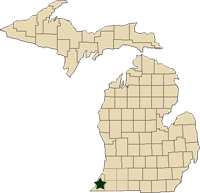 Southwest Michigan
Southwest Michigan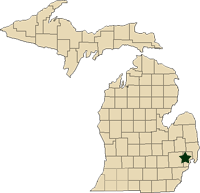 East Michigan
East Michigan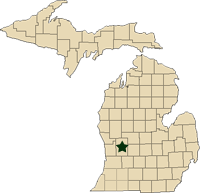 Grand Rapids Area
Grand Rapids Area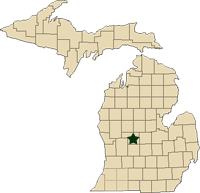 Central Michigan
Central Michigan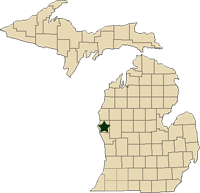 West Central Michigan
West Central Michigan




